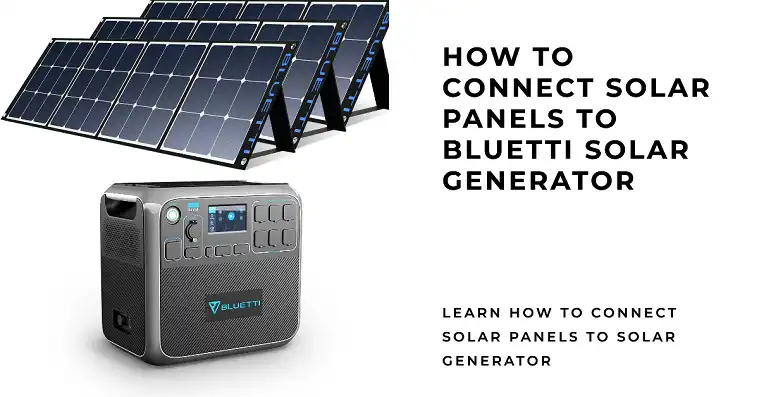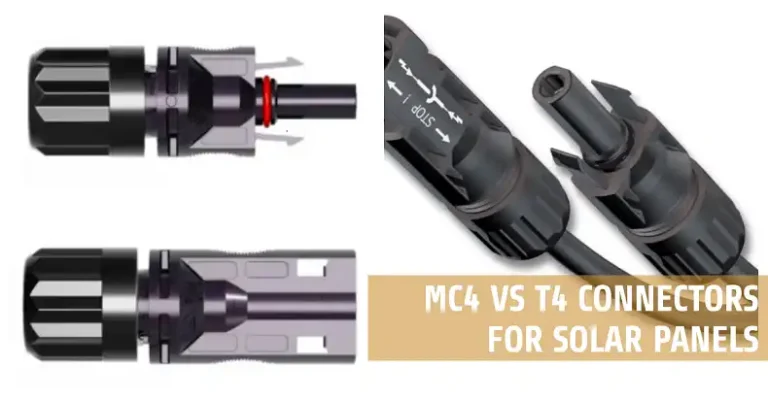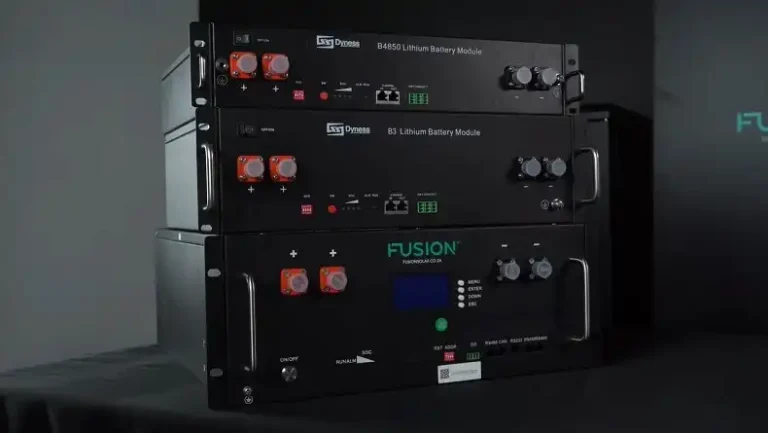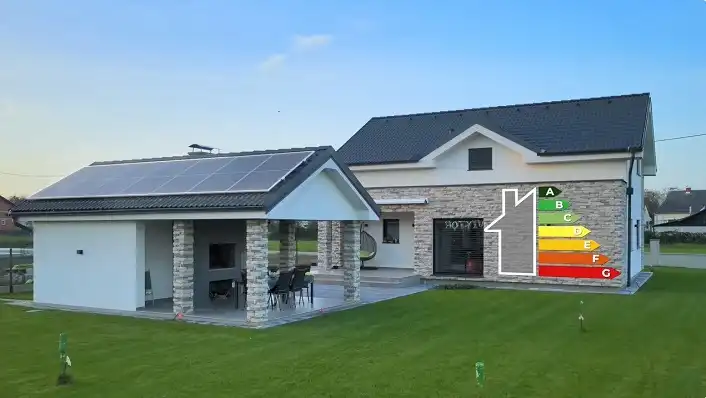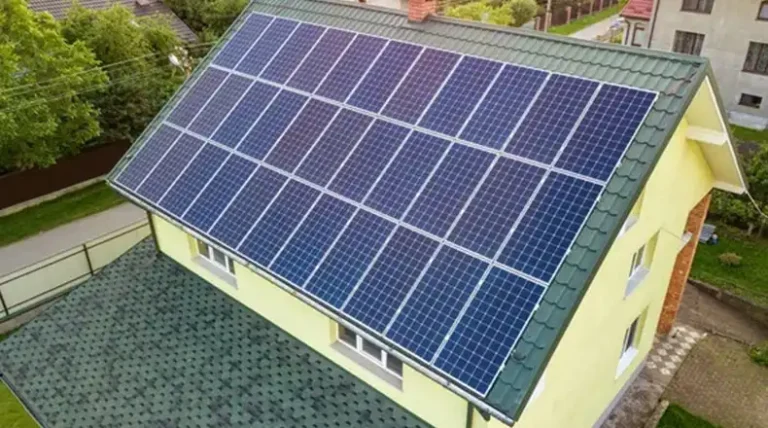Solar Panel Financing Options
The initial cost of installing solar panels can be a significant barrier for many households. Fortunately, numerous financing options are available to help make solar power more accessible and affordable.
By understanding your options and considering factors like tax incentives, interest rates, and long-term ownership benefits, you can make an informed decision that aligns with your financial goals and sustainability values. So, let’s get to know them.
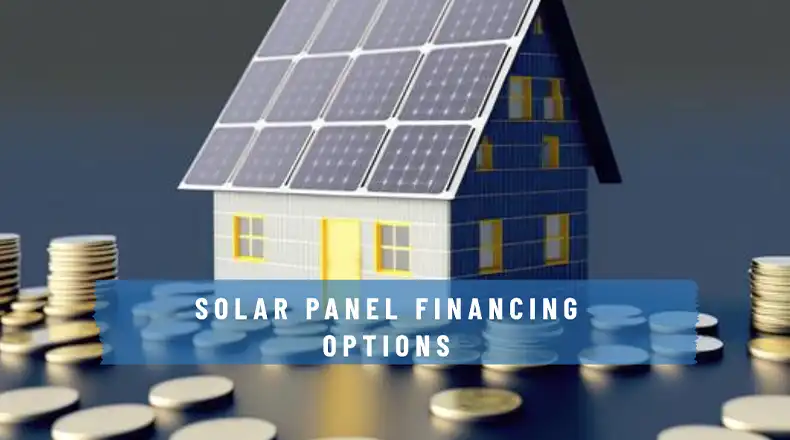
What Are the Solar Panel Financing Options?
Whether you prefer the convenience of a cash purchase, the flexibility of a loan, or the potential savings of a lease or power purchase agreement (PPA), there’s a solar financing option to suit your needs. Let’s get into the details of each option to help you make an informed decision.
Cash Purchase
Paying for your solar panel system upfront with cash is often the most cost-effective option in the long run. While the initial investment may be substantial, you’ll avoid paying interest on loans or lease payments, and you’ll be eligible for all available tax credits and incentives. Plus, you’ll own the system outright, allowing you to enjoy the full benefits of energy savings and potential increases in property value.
However, not everyone has the financial means to make such a significant upfront investment. If you choose this route, be prepared to part with a considerable sum of money, typically ranging from $10,000 to $30,000 or more, depending on the size of your system and your location.
Pros
- No interest payments, potentially lower overall cost in the long run
- Eligibility for all available tax credits and incentives
- Full ownership and control over the solar panel system
- Potential increase in property value
Cons
- Significant upfront investment
- Limited accessibility for those without substantial savings or financial resources
Solar Loans
Solar loans are a popular financing option that allows you to borrow the funds needed to purchase and install your solar panel system. These loans can be secured or unsecured, and the terms and interest rates vary depending on the lender and your credit score.
Secured Solar Loans:
a) Backed by collateral, such as your home equity
b) Generally offer lower interest rates and more favorable terms
c) Potential downsides include risking your collateral if you default on the loan
Unsecured Solar Loans:
a) No collateral required
b) Interest rates may be higher due to increased risk for the lender
c) More flexible and accessible for those with limited home equity
Potential loan sources for solar financing include banks, credit unions, and specialized solar loan providers. Additionally, some state and federal government programs offer low-interest or zero-interest loans for solar installations. So –
Pros
- Ability to spread out the cost over time with manageable monthly payments
- Ownership of the solar panel system and eligibility for tax credits/incentives
- Potential for long-term savings compared to leasing or PPAs
Cons
- Interest payments can increase the overall cost of the system
- Credit score requirements and potential loan qualification challenges
- Risk of defaulting on the loan, which could impact your credit score and collateral (if secured)
Cash-Out Refinance or Home Equity Line of Credit (HELOC)
If you have significant equity in your home, you may consider a cash-out refinance or a HELOC to finance your solar panel system. With a cash-out refinance, you essentially replace your existing mortgage with a new, larger loan, using the extra cash to pay for your solar installation. A HELOC, on the other hand, allows you to borrow against your home’s equity as needed, providing more flexibility in how you access and use the funds.
While these options can provide access to lower interest rates and potentially higher loan amounts, they also put your home at risk if you fail to make payments. It’s crucial to carefully consider the long-term implications and ensure you can comfortably afford the additional monthly payments.
Pros
- Access to potentially lower interest rates than unsecured loans
- Ability to tap into your home’s equity to finance the solar panel system
- Tax-deductible interest payments (consult a tax professional)
Cons
- Putting your home at risk if you fail to make payments
- Potential closing costs and fees associated with refinancing
- May not be an option for those with limited home equity or poor credit
Solar Leases or Power Purchase Agreements (PPAs)
Solar leases and PPAs offer a unique financing approach where you don’t own the solar panel system. Instead, a third-party company owns, installs, and maintains the system on your property, and you simply pay a fixed monthly fee to lease the equipment or purchase the electricity it generates.
This option can be appealing to those who want to enjoy the benefits of solar energy without the upfront costs or maintenance responsibilities of ownership. However, it’s important to note that you may not be eligible for certain tax credits and incentives, and the long-term savings may not be as significant as owning the system outright.
Pros
- No upfront costs or maintenance responsibilities
- Potentially lower monthly payments compared to loan options
- Professional installation and maintenance are handled by the leasing company
Cons
- Limited or no eligibility for tax credits and incentives
- Long-term savings may not be as significant as ownership
- Potential for increased costs after the initial contract term expires
- Restrictions on system modifications or home sale/transfer
Personal Loans
For those who may not qualify for traditional solar loans or lack sufficient home equity, personal loans can be a viable alternative. While personal loans often have higher interest rates and shorter repayment terms compared to dedicated solar loans, they can still provide the necessary funds for your solar installation.
Pros
- Potentially lower interest rates than unsecured solar loans
- Familiarity with personal loan products
- Accessibility for those who may not qualify for other solar financing options
Cons
- May not offer the same loan amounts or terms as dedicated solar loans
- Interest rates can be higher than secured solar loans
- Limited tax benefits or incentives compared to ownership
When considering a personal loan for solar financing, it’s essential to shop around and compare offers from various lenders to find the most favorable terms and interest rates.
What to Consider in Solar Panel Financing Options?
When exploring solar panel financing options, it’s essential to consider the overall costs, incentives, and system size requirements to ensure you make the most informed decision.
Solar Panel Costs
The cost of a solar panel system can vary significantly depending on factors such as your location, the type of panels you choose, and the size of the system required to meet your energy needs. Typical residential solar panel systems can range from $10,000 to $30,000 or more before applying any tax credits or incentives.
After factoring in the federal solar tax credit, which currently offers a 30% tax credit on the cost of installing a solar energy system, the net cost can be significantly reduced. This credit is available for systems placed in service between 2022 and 2032. For example, a $20,000 solar panel system could potentially cost $14,000 after the tax credit.
Here’s a detailed breakdown of the cost of a 6kW solar panel system across various states –
| State | 6kW System Cost | Average Cost per Watt |
| Tennessee | $21,240 | $3.54 |
| New Hampshire | $21,120 | $3.52 |
| Maine | $21,060 | $3.51 |
| Rhode Island | $21,000 | $3.50 |
| Massachusetts | $20,880 | $3.48 |
| Indiana | $20,760 | $3.46 |
| Vermont | $20,460 | $3.41 |
| Michigan | $19,440 | $3.24 |
| Washington, D.C. | $19,740 | $3.29 |
| New York | $19,740 | $3.29 |
| Illinois | $19,200 | $3.20 |
| Connecticut | $19,020 | $3.17 |
| Wisconsin | $19,080 | $3.18 |
| Minnesota | $18,840 | $3.14 |
| Kentucky | $18,840 | $3.14 |
| Colorado | $18,780 | $3.13 |
| Iowa | $18,420 | $3.07 |
| Louisiana | $18,360 | $3.06 |
| New Mexico | $18,000 | $3.00 |
| Maryland | $17,940 | $2.99 |
| Virginia | $17,940 | $2.99 |
| Oregon | $17,760 | $2.96 |
| Washington | $17,700 | $2.95 |
| Pennsylvania | $17,580 | $2.93 |
| New Jersey | $17,340 | $2.89 |
| West Virginia | $17,280 | $2.88 |
| Georgia | $17,220 | $2.87 |
| Idaho | $17,100 | $2.85 |
| Delaware | $16,500 | $2.75 |
| California | $16,980 | $2.83 |
| Kansas | $16,860 | $2.81 |
| Utah | $16,860 | $2.81 |
| Arkansas | $16,800 | $2.80 |
| Missouri | $16,620 | $2.77 |
| South Carolina | $16,200 | $2.70 |
| Ohio | $16,140 | $2.69 |
| North Carolina | $16,260 | $2.71 |
| Florida | $14,460 | $2.41 |
| Texas | $14,280 | $2.38 |
| Arizona | $14,100 | $2.35 |
| Nevada | $15,480 | $2.58 |
| Oklahoma | $15,420 | $2.57 |
Source: energysage
Government Incentives
In addition to the federal solar tax credit, many states and local governments offer additional incentives and rebates to encourage the adoption of solar energy. These incentives can further reduce the overall cost of your solar panel system and impact the long-term savings of different financing options.
To find local incentives in your area, you can consult resources like the Database of State Incentives for Renewables and Efficiency (DSIRE), which provides a comprehensive overview of renewable energy incentives and policies across the United States.
Here’s a detailed breakdown of the government incentives available for solar panel systems across various states –
| State | Government Incentives |
| Tennessee | Green Energy Tax Credit, TVA Green Power Providers Program |
| New Hampshire | Residential Renewable Electrical Generation Rebate Program: Up to $1,000 rebate |
| Maine | Efficiency Maine Solar Rebate Program: Rebates for solar PV systems based on system size |
| Rhode Island | Renewable Energy Growth Program: Performance-based incentives for up to 15 yearsSales and Property Tax Exemptions: Solar equipment is exempt from sales tax and increases in property tax |
| Massachusetts | Massachusetts Clean Energy Center (MassCEC) Rebates: Based on system sizeSMART Program: Payments for every kWh of solar power produced |
| Indiana | Renewable Energy Property Tax Exemption: Property tax exemption for solar installationsNet Metering: Credits at retail rate for systems up to 1 MW |
| Vermont | Vermont Small Scale Renewable Energy Incentive Program: Financial incentives for residential solar systemsNet Metering: Credits for excess solar energy at retail rates |
| Michigan | MI Saves Residential Solar Loan Program: Low-interest loans for solar systemsNet Metering: Allows customers to sell excess electricity back to the grid |
| Washington, D.C. | Solar Renewable Energy Credits (SRECs): SRECs can be sold for additional incomeProperty Tax Exemption: Solar installations are exempt from property taxes |
| New York | NY-Sun Incentive Program: Cash incentives based on system size and customer typeSolar Equipment Tax Credit: 25% tax credit up to $5,000 |
| Illinois | Illinois Solar for All: Program for low-income households, offering incentives and rebatesAdjustable Block Program (ABP): Performance-based incentives for solar installations |
| Connecticut | Connecticut Green Bank Residential Solar Investment Program (RSIP): Rebates and performance-based incentivesSales and Property Tax Exemptions: Solar installations are exempt from sales and property taxes |
| Wisconsin | Focus on Energy: Rebates for solar PV installationsProperty Tax Exemption: Solar systems are exempt from property tax increases |
| Minnesota | Made in Minnesota Solar Incentive Program: Incentives for solar systems using Minnesota-made componentsXcel Energy Solar Rewards: Performance-based incentives for solar systems |
| Colorado | Colorado RENU Loan: Low-interest loans for renewable energy installations, including solarNet Metering: Credits excess generation at retail rates |
| Iowa | Iowa Solar Energy System Tax Credit: 15% of the federal solar tax credit, up to $5,000Net Metering: Available for systems up to 1 MW |
| Louisiana | Residential Solar Tax Credit: Up to $2,000 per system for eligible installationsNet Metering: Credits excess generation at retail rates |
| New Mexico | Solar Market Development Tax Credit: 10% of the total system cost, up to $6,000Net Metering: Credits for excess solar power generation |
| Maryland | Residential Clean Energy Grant Program: Grants up to $1,000 for residential solar systemsNet Metering: Credits for excess energy generation at retail rates |
| Virginia | VirginiaSAVES Green Community Program: Low-interest loans for solar installationsProperty Tax Exemption: Solar equipment is exempt from property tax increases |
| Oregon | Oregon Solar + Storage Rebate Program: Rebates for solar PV and battery storage systemsNet Metering: Credits for excess generation at retail rates |
| Pennsylvania | Solar Energy Program (SEP): Loans and grants for solar installationsNet Metering: Available for systems up to 50 kW for residential customers |
| New Jersey | Transition Renewable Energy Certificates (TRECs): Performance-based incentives for solar energy productionSolar Sales Tax Exemption: Solar systems are exempt from state sales tax |
| Georgia | Georgia Power Solar Buyback Program: Credits for excess solar energyProperty Tax Exemption: Solar installations are exempt from property tax increases |
| Idaho | Sales Tax Rebate: Rebate on sales tax for solar equipmentNet Metering: Available for systems up to 100 kW |
| Delaware | Delaware Solar Renewable Energy Credits (SRECs): SRECs can be sold for additional incomeGreen Energy Fund: Grants for residential solar installations |
| Arkansas | Residential Energy Efficiency Loan Assistance Program: Low-interest loans for solar installationsNet Metering: Credits for excess solar generation at retail rates |
| Missouri | Missouri Solar Energy Tax Credit: State tax credits for solar installationsNet Metering: Available for systems up to 100 kW |
| South Carolina | Solar Energy System Credit: 25% state tax credit up to $35,000Net Metering: Credits excess generation at retail rates |
| Ohio | ECO-Link Program: Low-interest loans for solar installationsNet Metering: Available for systems up to 25 kW for residential customers |
| North Carolina | NC GreenPower Incentive: Performance-based incentives for solar energy productionNet Metering: Credits excess generation at retail rates |
| Florida | Property Tax Abatement for Renewable Energy Property: Exempts the added value of solar systems from property taxSales Tax Exemption: Solar systems are exempt from sales tax |
| Texas | CPS Energy Solar Rebate Program: Rebates based on system size and productionProperty Tax Exemption: Solar installations are exempt from property tax increases |
| Arizona | Arizona Residential Solar Energy Tax Credit: 25% of the cost, up to $1,000Net Metering: Available for systems up to 125% of the customer’s total connected load |
| Nevada | Solar Generations Program: Rebates for residential solar installationsNet Metering: Credits excess generation at retail rates |
| Oklahoma | Oklahoma Solar Energy Systems Property Tax Exemption: Exempts the added value of solar systems from property taxNet Metering: Credits excess generation at retail rates |
For the most current information, always check with local utility companies and government websites.
Solar Panel System Size
The size of your solar panel system will have a direct impact on the overall cost, energy production, and financing needs. Larger systems typically produce more energy but also require a higher upfront investment.
When determining the appropriate system size, consider factors such as your household’s energy consumption, the available roof space or land area for installation, and your long-term energy goals.
Let’s say your household’s average monthly electricity bill is $150. This translates to a yearly consumption of 1800 kWh (kilowatt-hours) considering an average electricity cost of $0.10 per kWh (check your electricity bill for this value).
Here’s a simplified calculation to estimate a possible system size –
Desired Coverage: Decide what percentage of your electricity bill you want your solar system to cover. Let’s assume you aim for 75% coverage. So, you want to generate 1800 kWh * 75% = 1350 kWh per year.
Local Sun Hours: Research the average number of peak sun hours per day in your area. Suppose your location gets 5 peak sun hours daily.
Solar Panel Wattage: For this example, consider solar panels with a rating of 300 watts each.
System Size Estimation: We can roughly estimate the number of panels needed using the following formula:
- Required System Capacity (kW) = Desired Yearly Generation (kWh) / (Peak Sun Hours/Day * 365 days/year)
- Required System Capacity = 1350 kWh / (5 hours/day * 365 days/year) ≈ 0.75 kW
Number of Panels: To achieve a 0.75 kW system, you’d need approximately
- Number of Panels = Required System Capacity (kW) / Panel Wattage
- Number of Panels = 0.75 kW / 0.3 kW/panel ≈ 2.5 panels
Note: This is a simplified example for illustration purposes only. The actual number of panels needed can vary depending on various factors like panel efficiency, shading on your roof, inverter efficiency, and local regulations.
Which Solar Panel Financing Option Is Right for You?
Choosing the right solar panel financing option isn’t a one-size-fits-all solution. It requires careful consideration of your circumstances and priorities. Each financing option offers unique advantages and drawbacks. To make an informed decision, weigh the following factors –
Tax incentives and rebates: Take advantage of available federal, state, and local tax credits and rebates. These can significantly reduce the overall cost of your solar installation and impact the long-term savings of different financing options.
Interest costs and loan terms: Compare the interest rates and repayment periods offered by various lenders and financing options. A lower interest rate can result in significant savings over the life of the loan.
Credit score requirements: Different financing options may have varying credit score requirements. Assess your credit profile and determine which options are realistically accessible to you.
Upfront costs vs. long-term ownership benefits: Weigh the upfront costs of each option against the long-term benefits of owning or leasing the solar panel system. Ownership typically provides greater long-term savings but requires a larger upfront investment.
Maintenance responsibilities: If you choose to own the system, you’ll be responsible for maintenance and any necessary repairs. Leases and PPAs often include maintenance as part of the agreement.
Final Thought
Financing your solar panel installation is a crucial step in unlocking the long-term benefits of renewable energy. By exploring all available options, from cash purchases and loans to leases and PPAs, you can find the solution that best fits your financial situation and preferences.
As you navigate the various financing options, don’t hesitate to seek professional advice from solar installers, financial advisors, or government resources. With the right strategy in place, you can make the transition to solar power a seamless and rewarding experience.

